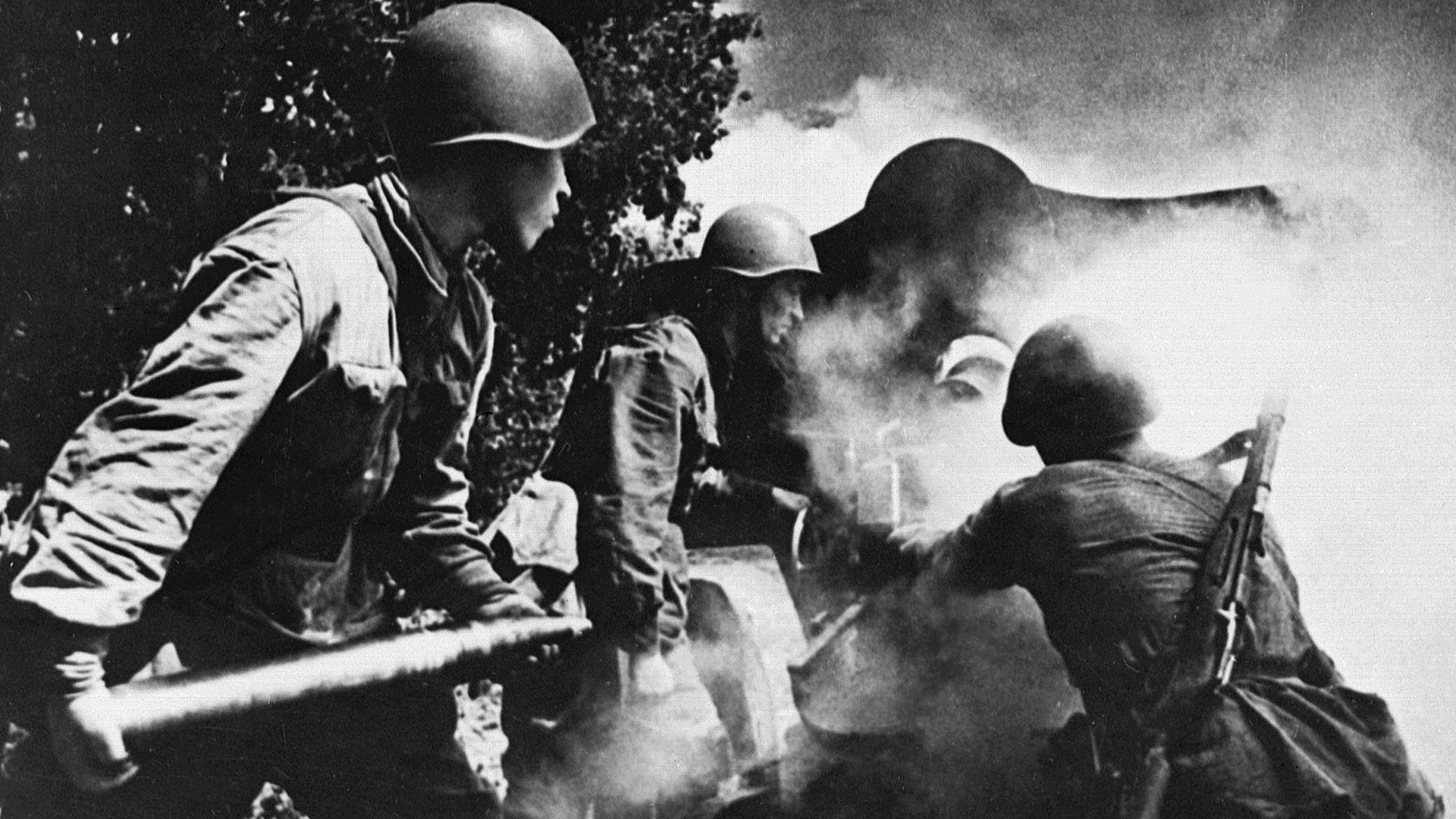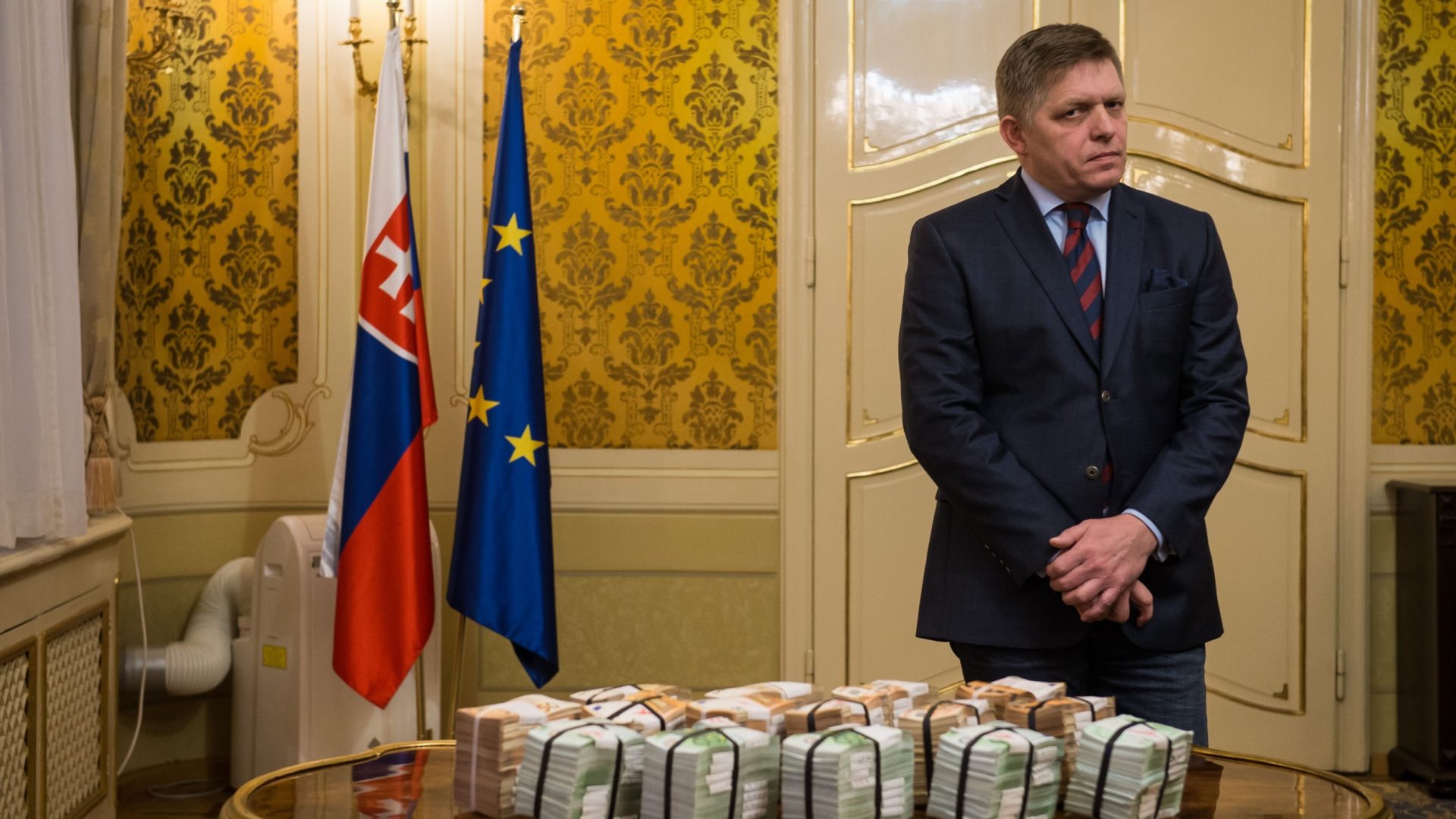It is 75 years since the Battle of Kursk, the largest tank battle in history. More than 3,000,000 men and 8,000 tanks met, 400 miles south of Moscow. Yet today, once again, German tanks are facing Russian tanks, just a few hundred miles from the site of that battle.
The Battle of Kursk turned the war on the eastern front. In the aftermath of the Red Army’s bloody resistance at Stalingrad, Hitler believed that a victory would reassert German strength. The Germans hoped to cut off and envelop Soviet forces in the Kursk salient, a 160-mile-long bulge of Soviet-held land.
The battle began with Operation Citadel (Zitadelle) on July 5, 1943. The Germans had delayed the offensive while they tried to build up their forces, giving the Red Army time to construct a series of concrete bunkers and minefields and establish a large reserve force for counter-offensives. The Germans threw themselves on these defences, suffering massive losses. After the German offensive stalled in the north, the Soviets attacked their rear and the south, leading to the Battle of Prokhorovka, an armoured clash between the 5th Guards Tank Army and the II SS Panzer Corps. At terrible Soviet cost, this stalled the advance of the Panzer Corps.
Describing the events as a Russian victory, historian Antony Beevor wrote: “The German army had received a severe battering… the Germans had no choice but to withdraw to the line of the River Dnepr and start to pull their remaining forces out from the bridgehead.”
It was Hitler’s final offensive on the eastern front. The allied invasion of Sicily began shortly afterwards, and German reinforcements intended for the eastern front were diverted to the Mediterranean. Germany’s loss of men and tanks ensured that the Red Army held the strategic initiative for the rest of the war. When the dust settled and the thunder of combat was silenced, the Kursk salient was an apocalyptic wasteland of smoking steel carcasses, soaked in the blood of dead soldiers and scattered with bones. More than 200,000 families would never be the same again.
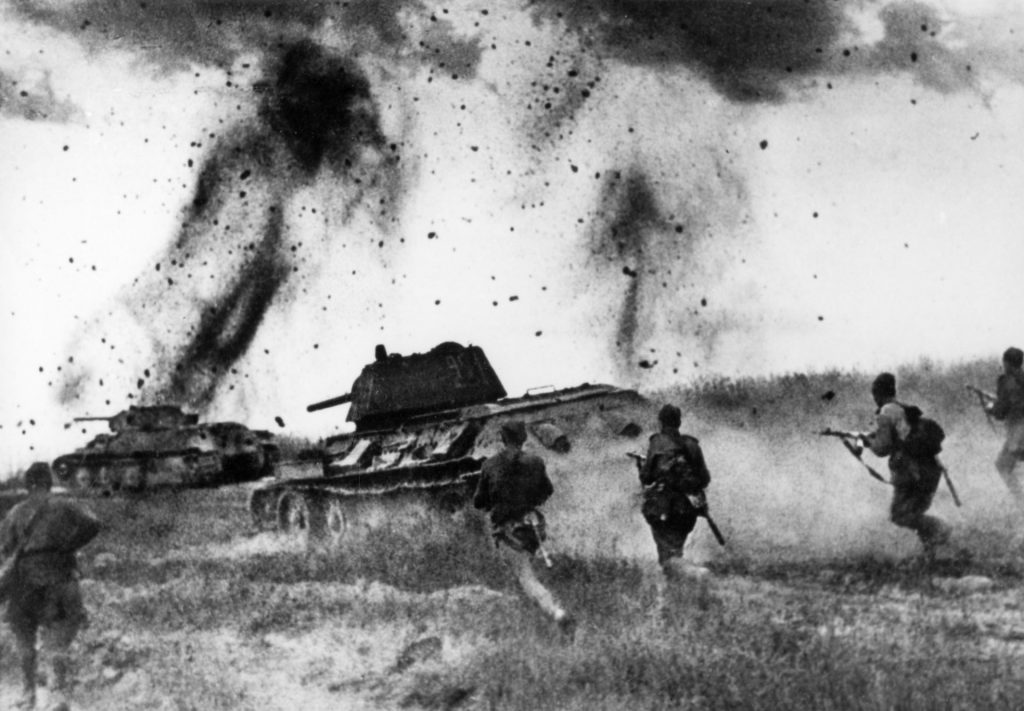
According to Catherine Merridale, in Ivan’s War: Life and Death in the Red Army, 1939-1945, of the 403,272 tank soldiers (including a small number of women) who were trained by the Red Army in the war, 310,000 would die. When a tank was shelled the white-hot flash of the explosion would almost certainly ignite the tank crew’s fuel and ammunition. Those who had not been decapitated or dismembered by the shell itself would have no more than 90 seconds to open the heavy, sometimes red-hot, and twisted hatch to climb out. The tank would “boil up”, melting its metal and torching the atmosphere around it. Those who did not escape the hellish inferno were usually so badly burned that the remains were unidentifiable and even inseparable. Merridale recounts the dark apology a Russian cavalry soldier made on being told that almost every soldier in his squadron had died that day: “I’m sorry, I’ll make sure that I burn tomorrow.”
The present Ukraine war is primarily an infantryman’s fight supported by artillery, and although Ukraine now has a small number of tanks (of mixed types) they are rarely deployed.
In 1943, as the Germans advanced, following closely behind the tanks were the infantry and combat engineers, coming forward to demolish obstacles and clear trenches. In addition, the advance was well supported by the Luftwaffe. Ukrainians still lack some of these supporting elements (especially de-mining equipment and vehicles).
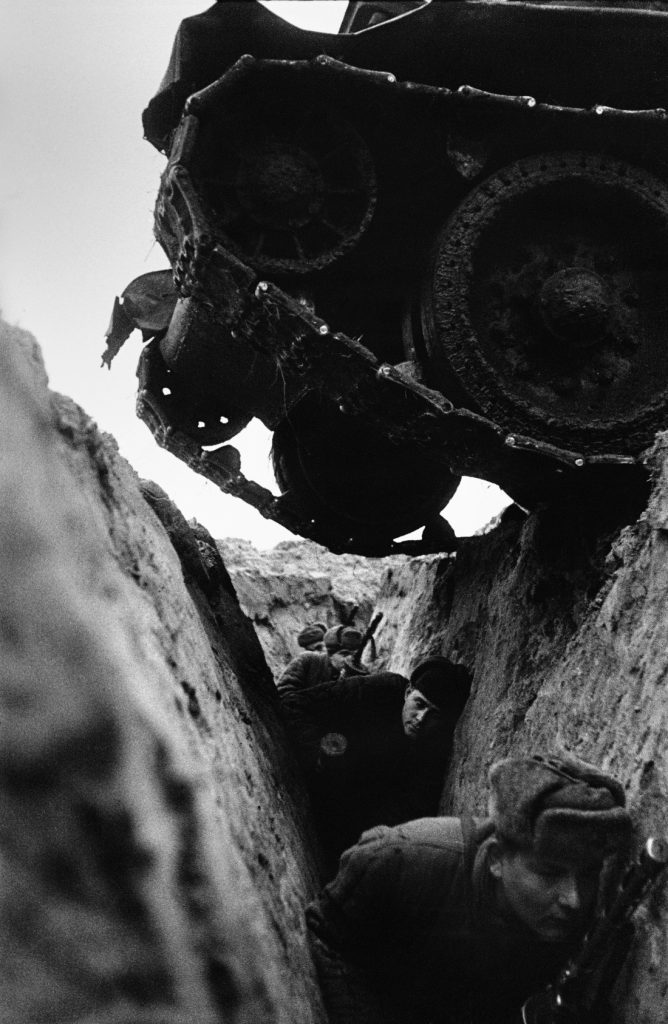
Pulling apart the systemic and Russian defences is a massive task. No western military has recent experience in breaching the types of defences the Russians have constructed. Traditionally Nato armies will not launch offensive operations unless they have a force ratio of at least three to one. The Ukrainians do not have this ratio overall, but will be desperately trying to establish it locally. The Germans in 1943 were well experienced in combined arms manoeuvre and still could not break through at Kursk. Those frustrated at Ukrainian progress should understand this.
However, there are also similarities. At the beginning of the offensive, the Ukrainians did try a direct style of assault, like the Germans in 1943, and like the Germans they discovered that the Russian defences were well developed.
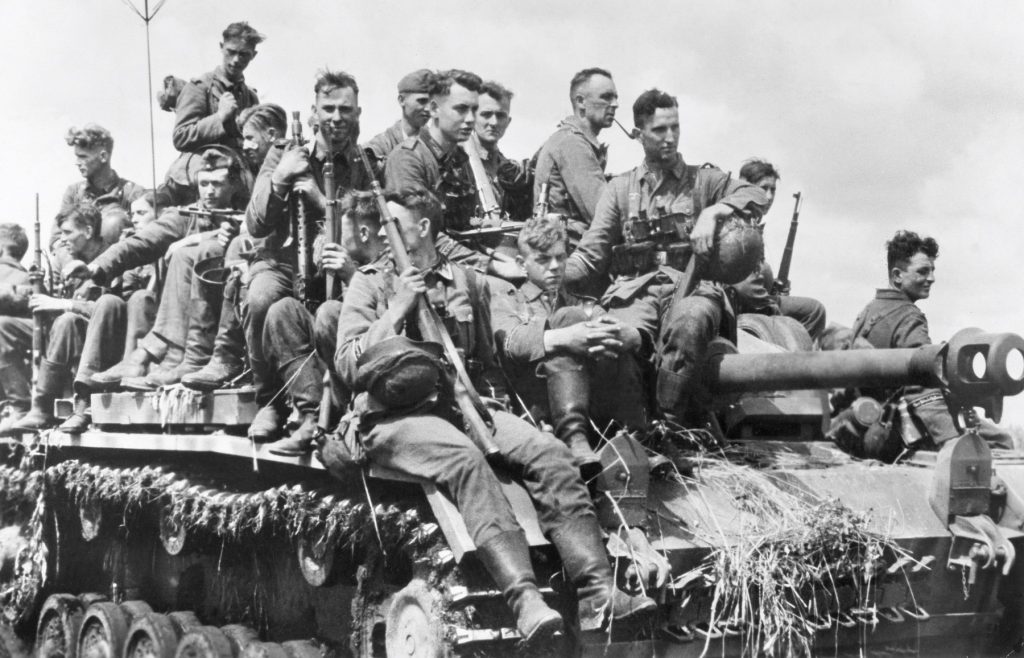
With Operation Citadel, Hitler and his generals knew they were under significant time pressure to make material gains. The operation was the last chance to regain the initiative before Soviet material power grew overwhelming and before the allies could gain a foothold in Europe.
There is a sense that Ukraine’s president, Volodymyr Zelensky, and his generals are in a similar position. Russia plans to produce about 18,000 large and medium-sized drones by the end of 2024. According to the Pentagon, the Russians have also completed the construction of a factory to produce Iranian Shahed drones, which will be operational next year. A Republican victory in the November 2024 US election poses risks to long-term US support to Ukraine – and Putin is happy to sacrifice bodies on the battlefield to buy time.
Last month at the Aspen Security Forum, Zelensky pointed to the slow arrival of more advanced weapons systems from the west as a reason for Ukrainian forces’ slow progress so far. Zelensky claimed that they planned to start the counteroffensive in spring, but “we didn’t… because… we have not enough munitions, and armaments, and not enough properly trained brigades. I mean properly trained in these weapons.” The Ukrainians will not get all the weapons they are asking for, and do not have the time they would like to train their people. Even if they did, as the Germans showed in 1943, success is not guaranteed. Breaking through the significant Russian defences is a mammoth task that will take time and blood. Attacking the morale of the Russian forces is an easier task.
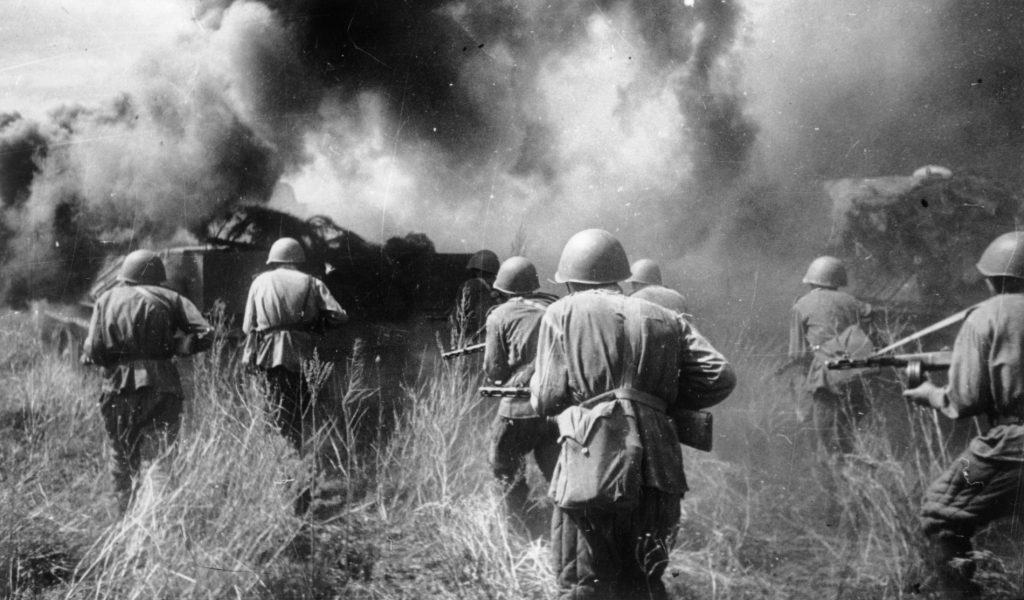
General Georgy Konstantinovich Zhukov, who had command of the Red Army at Kursk, later said that the battle was “one of the most important engagements of the Great Patriotic war and the second world war as a whole. Not only were the most powerful groupings of the Germans destroyed here, but the faith of the German army and the German people in the Nazi leadership and Germany’s ability to withstand the growing might of the Soviet Union was irrevocably shattered.”
Kursk is heavily symbolic for the Russians. A new Kursk that destroys the faith of the Russian army and the Russian people in their kleptocracy could be close by if Europe and the west keep the faith in Ukraine.

